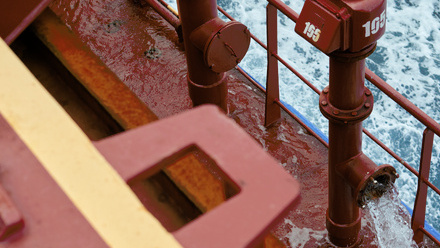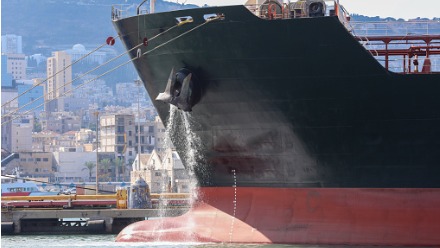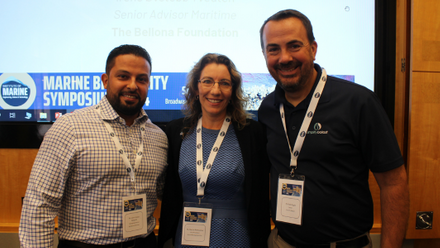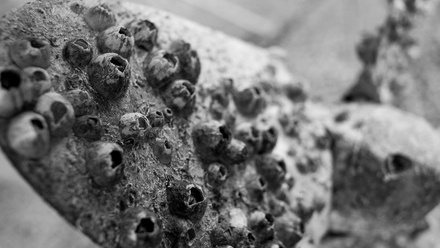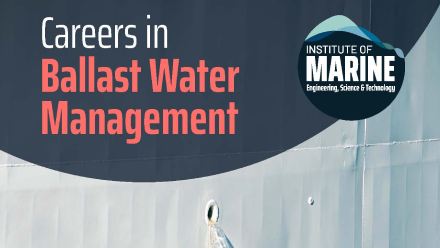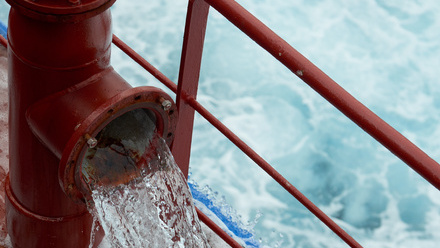The future of ballast water treatment looks UV bright
The clock is ticking for ship owners to make sure their vessels meet the performance standards of the Ballast Water Management Convention.
The Ballast Water Management Convention (BWM Convention), brought in by the International Maritime Organization (IMO) in 2017, was designed to prevent the spread of invasive aquatic species through the discharge of the three to five billion tons of ballast water carried on ships each year.
And from 8 September 2024, all vessels subject to the BWM Convention must install a ballast water treatment system that is compliant with D-2 (the second of two standards dealing with the “maximum amount of viable organisms allowed to be discharged”).
While the US is not party to the BWM Convention, vessels discharging ballast water into US territorial waters must comply with the US Ballast Water Management Regulation, using a treatment system approved by the US Coast Guard (USCG).
Most BWM Convention systems treat the ballast water using a two-stage approach, the first involving a form of mechanical separation, followed by physical or chemical treatment.
These second stage treatments are commonly ultraviolet (UV) or electrochlorination (EC) systems. Despite a wide range of safety, logistical and cost considerations, EC was typically favoured for larger ships with flows of more than 1,000m3/hour, because UV solutions took up too much capacity to handle those volumes.
UV making a comeback
That is now changing. With smaller footprints, modern UV systems are increasingly the go-to choice, even for large ships.
According to Alfa Laval, for example, its PureBallast3 solution can be configured for flows up to 3,000m3/h; on a very large crude carrier (VLCC) with a flow of 6,000m3/h, the use of two UV systems would handle this flow rate and create system redundancy.
For shipowners looking to decarbonise their fleet, chemical-free, non-corrosive UV is clearly gaining ground as a solution.
French firm BIO-UV Group, for example, is supplying its all-in-one mechanical filtration and UV ballast water treatment system, known as BIO-SEA, to a wind-powered cargo vessel newbuild, set to enter service in 2025.
BIO-UV will supply a three-lamp system, certified by the IMO and USCG, as an automated system for the green ship, which will sail from France to the United States for luxury brands such as Hennessy, Longchamp, Michelin and Clarins.
“The main benefits are simplicity of operation and maintenance, no use of chemicals for its main process line and, in terms of treatment and operation, insensitivity to water salinity,” says Maxime Dedeurwaerder, Business Unit Director of BIO-UV.
There are drawbacks, with Dedeurwaerder citing sensitivity to water turbidity. “When choosing a filtration and UV system, shipowners [will] choose a system with a proven track record of high performance, mostly resulting from UV reactor design and UV dose delivered.”
Costs, both upfront and ongoing operations and maintenance, are also a consideration. Dedeurwaerder states that BIO-UV’s system has lower acquisition and operation costs for moderate and low flowrate applications.
“[Operating expense] is sometimes mentioned as a drawback of UV systems, but for various operation profiles, the relatively lower costs of maintenance in terms of parts and servicing overcome the lower power consumption of other technologies.”
Crew training is essential for safety. BIO-UV has its own 1,200m² maritime training, engineering, and production facility at Lunel where it can provide a comprehensive range of training modules to ships’ crews according to Dedeurwaerder.
“Ballast water treatment systems are technically complex and proper training is essential to ensure they are operated and maintained safely, efficiently, and remain compliant.”
Dedeurwaerder sees continued growth as shipowners upgrade their fleets. “From our perspective, filtration and UV is the first or the second most common technology in terms of number of vessels and the second most common in terms of tonnage,’ says Dedeurwaerder.
“We would expect this proportion to at least withstand the future. Many types of average size, small ships that were not equipped in retrofit because of their age and location of operation will be equipped in newbuilding.”
Main image: A retrofit example of filtration and UV; credit: BIO-UV
For more information on this topic, join IMarEST’s Ballast Water Management Special Interest Group.

